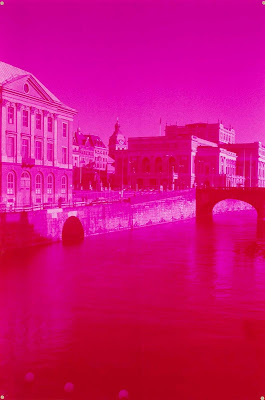-Oslo.jpg) |
| Hanne Borchgrevink Pink Landscape 1990 acrylic on canvas KORO (Public Art Norway), Oslo |
 |
| Vilhelm Hammershøi Interior in Louis Seize Style 1897 oil on canvas Hirschsprung Collection, Copenhagen |
 |
| Inka Lindergård and Niclas Holmström Saga V 2009 C-print Göteborgs Konstmuseum, Sweden |
 |
| John O'Reilly Scissors 2016 printed paper collage, with added pigments Worcester Art Museum, Worcester, Massachusetts |
-Kunstbibliothek-Staatliche-Museen-zu-Berlin.jpg) |
| Carl Kunst Hermann Glassl, Violin Maker, Munich ca. 1912 lithograph (poster) Kunstbibliothek, Staatliche Museen zu Berlin |
 |
| Henri Fantin-Latour Roses 1894 oil on canvas Musée des Beaux-Arts de Reims |
 |
| Maria Lassnig Suctioned Cow 1988 oil on canvas Museum Ludwig, Cologne |
 |
| Hans Bellmer Les Jeux de la Poupée ca. 1938 hand-colored gelatin silver print Moderna Museet, Stockholm |
 |
| Jean-Baptiste-Camille Corot Young Woman in a Pink Skirt ca. 1845-50 oil on canvas Clark Art Institute, Williamstown, Massachusetts |
-Seated-Woman-1983-oil-on-canvas-Nordnorsk-Kunstmuseum-Troms%C3%B8.jpg) |
| Johanne Hansen-Krone Seated Woman 1983 oil on canvas Nordnorsk Kunstmuseum, Tromsø |
 |
| Santi di Tito Portrait of a Young Woman as Portia Catonis ca. 1590 oil on panel Statens Museum for Kunst, Copenhagen |
-Dresden.jpg) |
| Henri de Toulouse-Lautrec Two Friends 1895 oil on paper, mounted on panel Galerie Neue Meister (Albertinum), Dresden |
 |
| Gustav Klimt Portrait of Sonia Knips 1897-98 oil on canvas Belvedere Museum, Vienna |
 |
| Jean-Étienne Liotard Portrait of Maria Amalia, Archduchess of Austria 1762 watercolor on paper Musée d'Art et d'Histoire de Genève |
 |
| Rosemarie Trockel Venice could be Cold 2014 C-print mounted on aluminum Moderna Museet, Stockholm |
 |
| Jan Svenungsson and Ola Billgren Stockholm 1 1991 C-print mounted on aluminum Moderna Museet, Stockholm |
It was nearly sunset, and they were close to the outskirts of Bessa when they saw a host of newly slain bodies lying on the ground. Most could be identified as Persians by their apparel and equipment, but there were a few Egyptians too. The scene was clear evidence that there had been fighting, but who the adversaries had been they could not guess. But as they picked their way through the corpses, looking at them closely as they went in case there was someone close to them among the dead – for the heart is ever in dread for those it loves the most, ever quick to divine the worst about them – they came upon a little old woman clasping one of the Egyptian dead in her arms, making all manner of mournful lamentations. They decided to try to get some information from the old woman, if they could, so they sat down beside her and began by trying to console her and reduce the excesses of her grief. This produced the desired effect, so they asked the old woman (Kalasiris speaking to her in the Egyptian tongue) who it was she was grieving over and what this fighting had been about. In a few words she told them everything: her grief was for her son, who was among the dead, and she had come to the battlefield in the express hope that someone would run her through and release her from life. In the meantime, however, she was making her son the customary offerings, so far as circumstances permitted, though she had nothing to give but tears and lamentation.
– Heliodorus, from The Aethiopica, or, Theagenes and Charikleia (3rd or 4th century AD), translated from Greek by J.R. Morgan (1989)